Skunk-repellent plants – what to grow to banish these critters from your yard
Not just flowers, but vegetables crops too, will help to keep skunks at bay
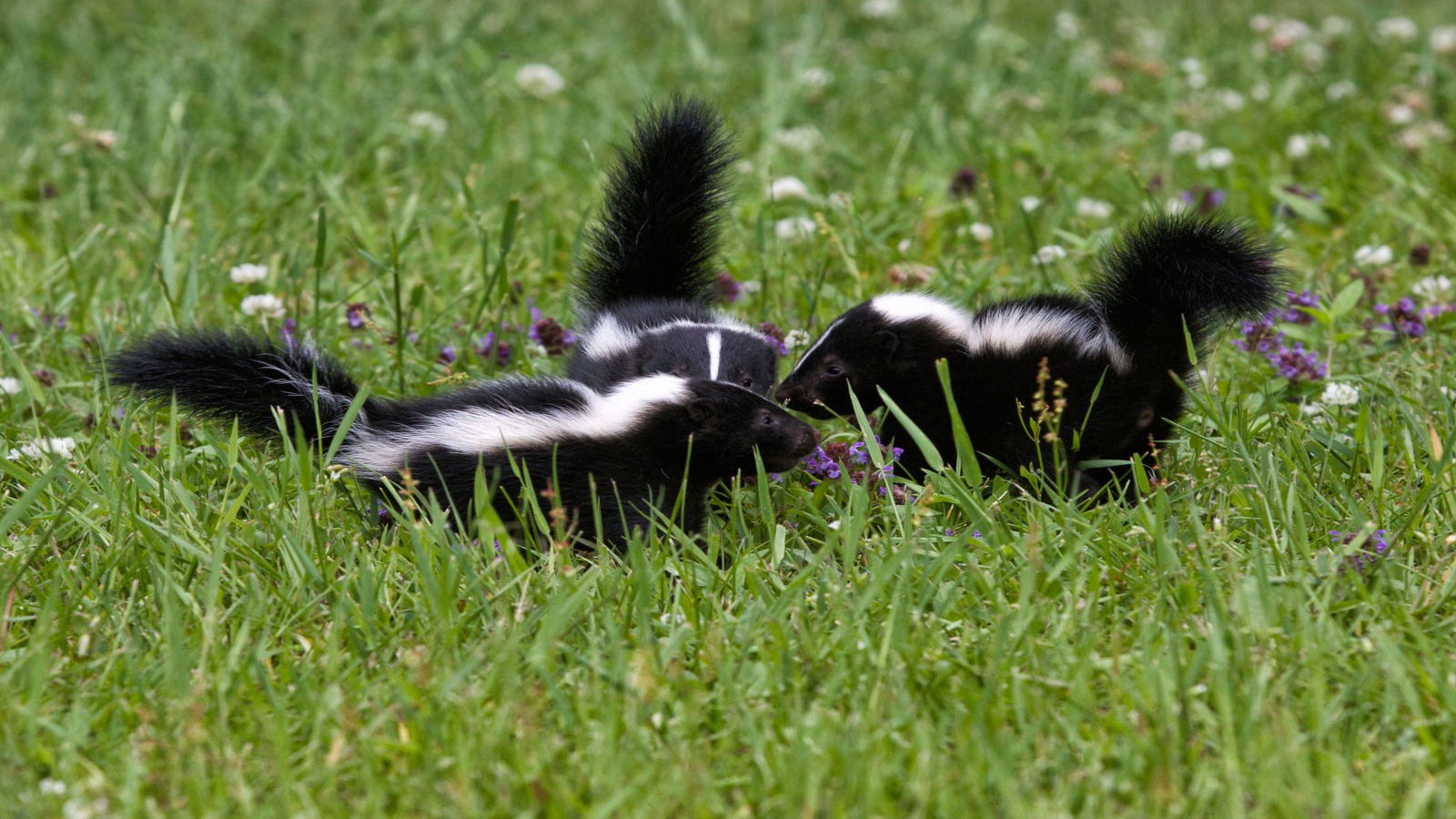

Growing skunk-repellent plants is one of the easiest and most natural ways of deterring these cute but territorial mammals from your backyard.
Although skunks are timid around humans, they should not be encouraged to move in. Not just because of the smell of rotten eggs that they spray when they are scared, but because they can do serious damage to your yard and property, and may carry diseases that can transfer to pets.
Getting rid of skunks can be problematic because they are mainly nocturnal animals, usually active at night which reduces your chance of spotting and stopping them. It is hard to remove their noxious scent, which they spray when alarmed, and they may also eat your fruit crops, destroy plants and dig up your lawn in search of grubs. Removing them by trapping is not advisable and may even be illegal in your state, so the best way of preventing skunk damage is to grow plants that deter them from entering your backyard in the first place.
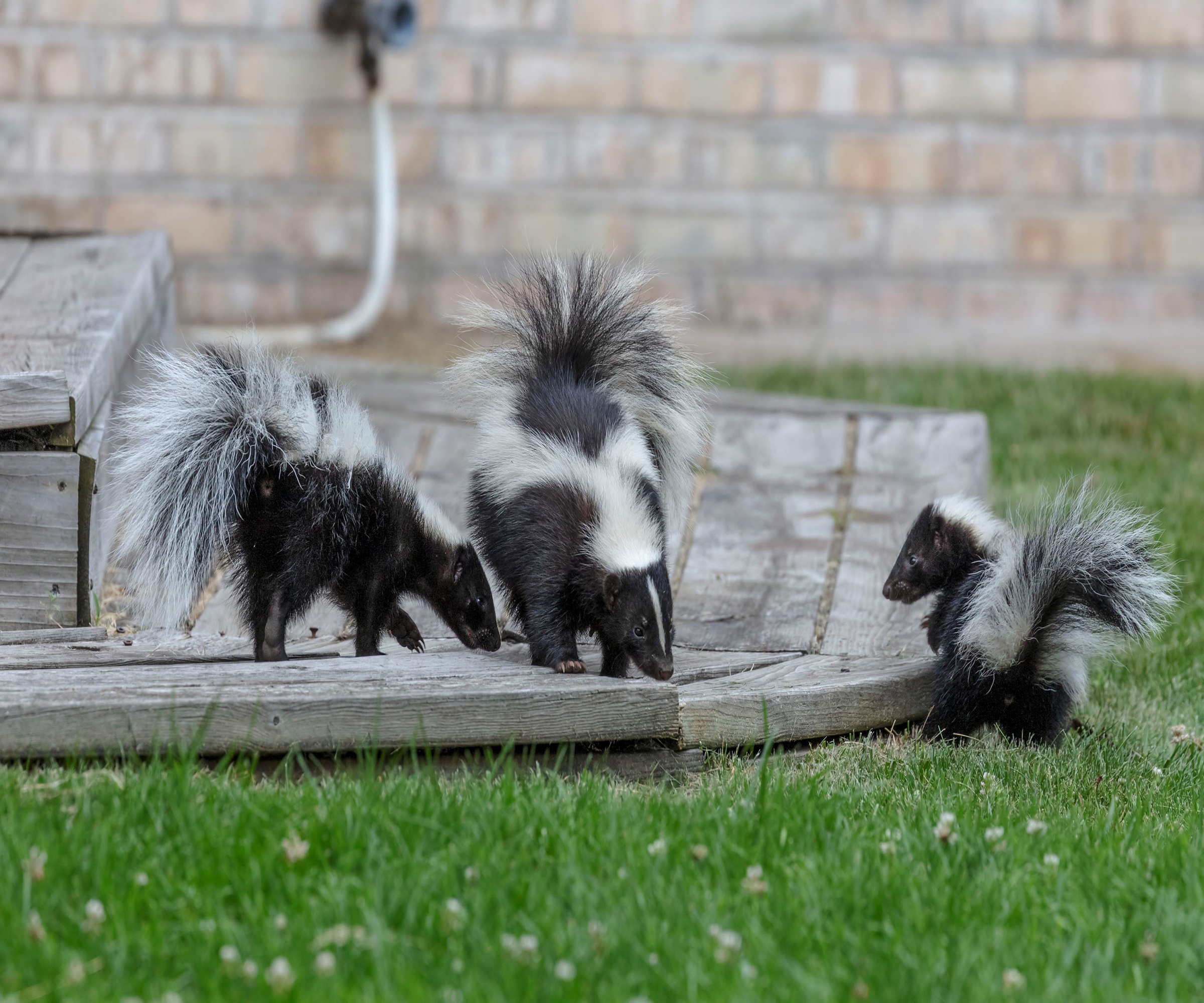
Skunks will quickly make themselves at home in your backyard unless you take precautions
7 of the best skunk-repellent plants
The following plants can be really effective at deterring skunks. Some are poisonous, others smell distasteful to them, and some would also cause them physical discomfort and irritation if they tried to eat them.
The bonus for us is that lots of these plants are easy to grow, and will add interest, color and edible crops to your yard. Some can also be used as hedging to boost privacy and add extra security around your property.
1. Summer Squash
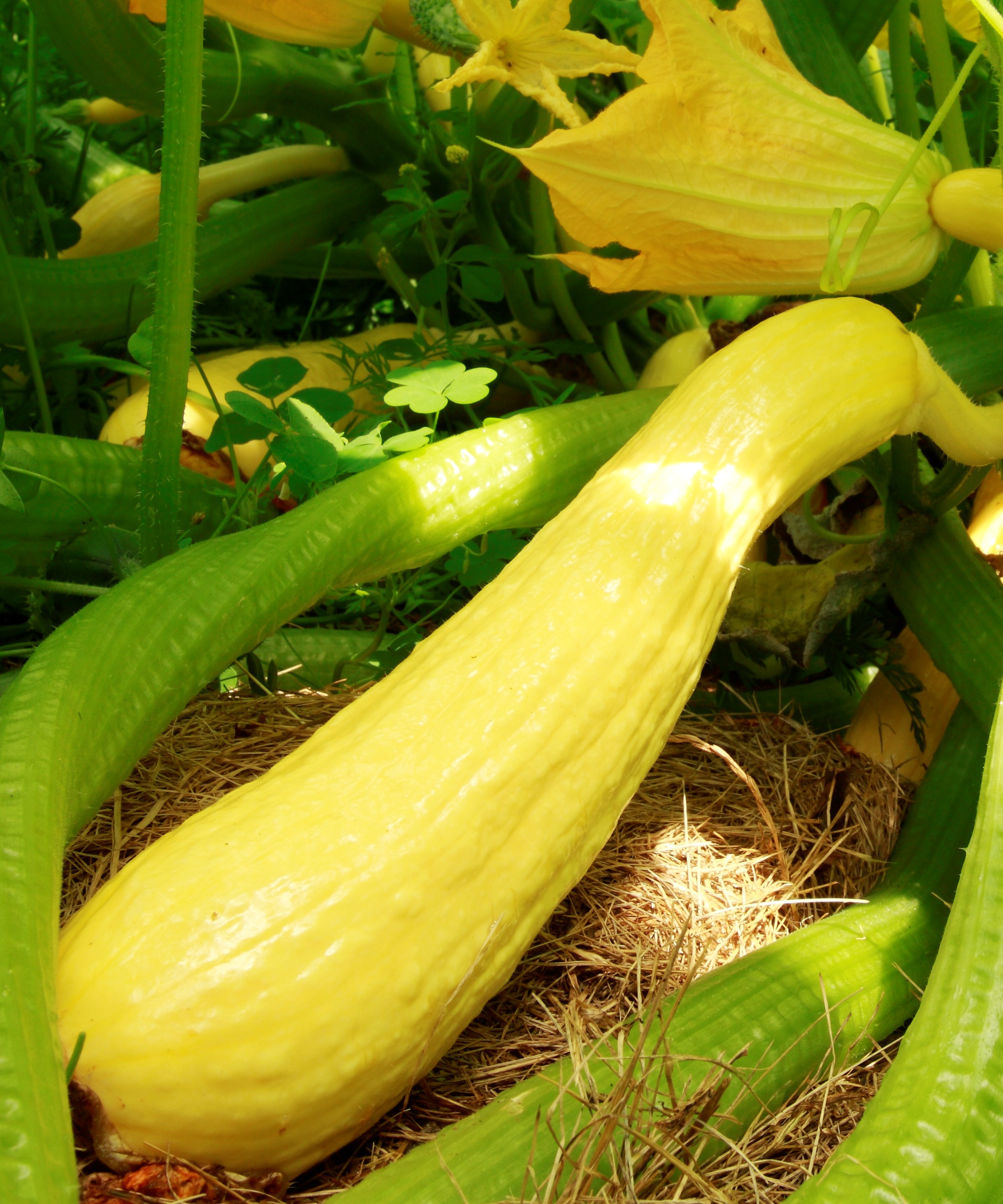
Summer squash, including the crookneck variety, can help deter skunks
Growing squash is usually straightforward. They are high-yielding vegetables, and as an added bonus their leaves irritate the skin of skunks, so they stay away.
There is a massive range of summer squash to grow, including patty pan, zucchini of all shapes and colors, crookneck squash and the large, funkily-shaped tromboncino squash, and most can be grown in USDA hardiness zones 3-10
Design expertise in your inbox – from inspiring decorating ideas and beautiful celebrity homes to practical gardening advice and shopping round-ups.
Summer squash are easy to grow and are harvested in the warmer months, but won’t keep as long as winter squash, which have thicker skins.
In cooler climate zones you should sow the seed indoors in spring, then plant the seedlings into the yard when the weather is reliably warmer, especially at night. In warmer areas squash seeds can be sown where you want the plants to grow in your yard.
Alternatively, you may find it easier to buy young plants and miss out the sowing stage altogether.
They like a sunny spot with nutritious soil that has been enriched with well-rotted compost or manure. For a long cropping season, remember to start harvesting as soon as the squashes reach an edible size, or the plant will stop producing.
You can see the range of summer squash seeds at True Leaf Market here.
2. Crown Imperials

Crown imperials make a springtime statement and can help keep skunks at bay
Crown imperials (Fritillaria imperialis) are one of the best spring bulbs, making a bold statement when grown en masse. They produce a ‘crown’ of orange or yellow flowers atop strong stems in April and early May, before dying back.
Both the bulbs and flowers of crown imperial plants help to deter skunks because they are toxic to animals (so take care around pets), and skunks also detest their smell. It is worth noting that crown imperials are also one of the best squirrel-repellent plants, if you are plagued by these little rodents as well.
They are suitable for US hardiness zones 5-8, and should be planted in the fall, the bulbs on their sides so water doesn’t collect at their tips and cause rotting.
They like a sunny spot where the soil is free-draining and enriched with well-rotted organic matter (compost or manure). Once they have finished flowering, deadhead your crown imperials but let the foliage die back naturally to feed the bulbs ready for the following year's display.
3. Stinging Nettles

Stinging nettles are good for attracting pollinators and beneficial insects and also help deter skunks
Stinging nettles get a bad press for irritating our skin, but the good news is they make skunks feel uncomfortable too.
Although they are often regarded as a nuisance and a weed, nettles have many beneficial uses and I like to grow a clump of them in an out-of-the-way area of my backyard. They will usually grow well in US hardiness zones 4-10.
Their fresh, young leaves can be used as an ingredient in healthy spring soup, their leaves and stems make an excellent natural fertilizer for plants, and many butterflies and beneficial garden insects use them as food plants for their larvae.
4. Oregon Grape
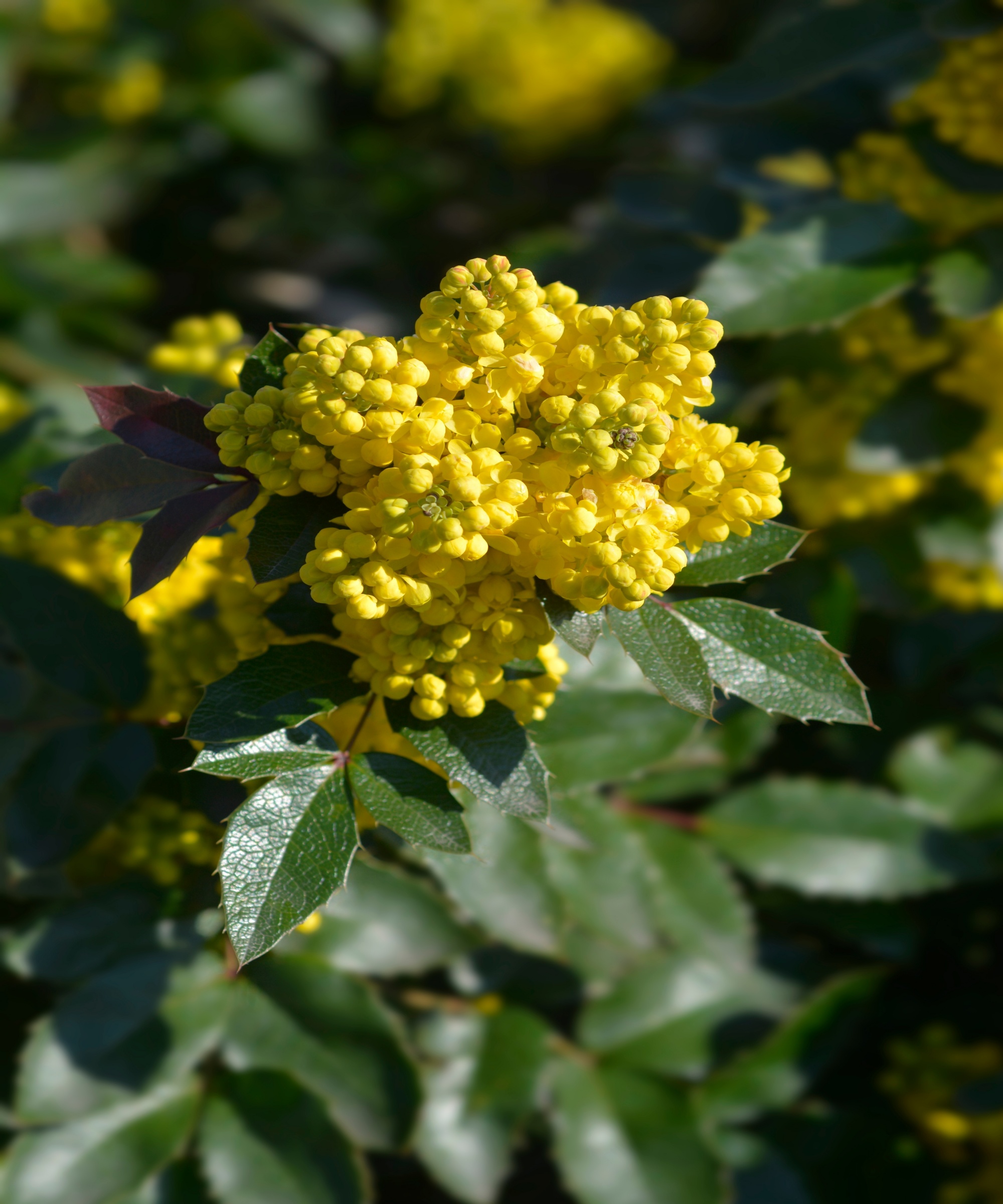
Oregon grape is an attractive shrub that deters skunks and can be used as a barrier against larger intruders
Also known as Berberis aquifolium, Mahonia aquifolium and holly-leaved barberry, Oregon grape is a low-growing, attractive shrub that has tough, spiked leaves that are painful for skunks to push through, so they stay away.
An added bonus is that they can also be grown as part of a dense and spiky hedge to keep out human intruders.
A variety of mahonia, Oregon grape is the official plant of the US state that bears its name. It produces yellow clusters of flowers in spring and its leaves change colour as summer moves into the fall. It also produces black berries in fall that are a good food for garden birds.
Oregon grape is low-maintenance, good for ground cover because of its height, and is one of the best shrubs for shade. When cutting back, prune the same way as you would prune a laurel. Grow in US hardiness zones 5-9.
5. Wild Cucumber
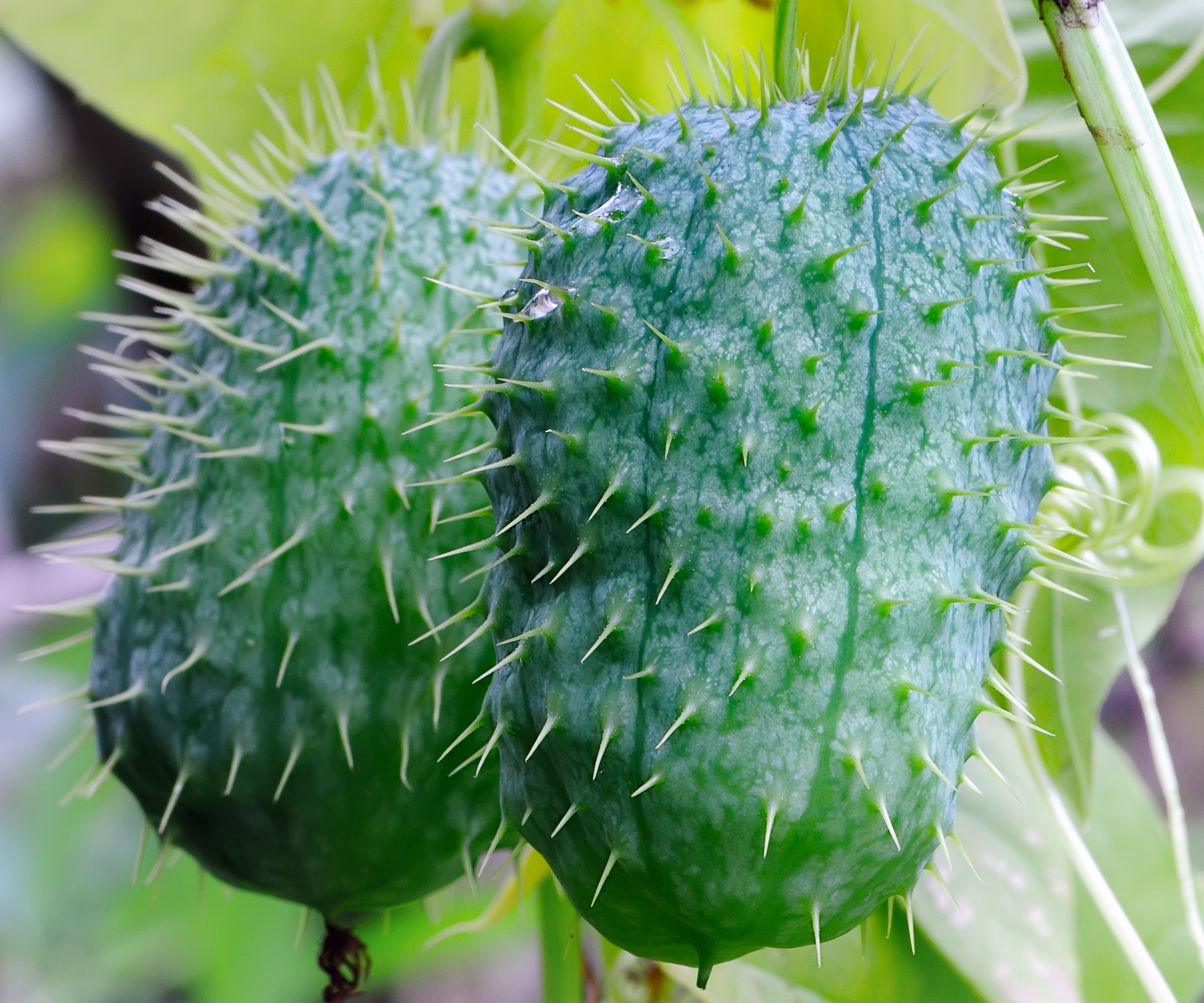
Sprawling wild cucumbers bear spiky, inedible fruits and can cover a large area of ground
Wild cucumbers are climbing or trailing perennials that grow from a large underground root, which gives them their common name of ‘manroot’.
Wild cucumbers have spiky leaves and fruits, which skunks hate - so the plant’s ability to cover large areas of ground makes it an ideal deterrent.
They can grow to 25ft when mature, and are not invasive although gardeners are advised to remove them if they start to scale trees, shrubs and even the side of buildings. However, they are sometimes used as a climbing plant to clad a pergola or arbor as their small, white star-shaped flowers are an attractive feature.
Unfortunately, although they are related to the Cucurbit (edible cucumber) family, their fruits are not edible and the seeds should not be added to the compost heap in case they are spread all over the yard.
6. Holly
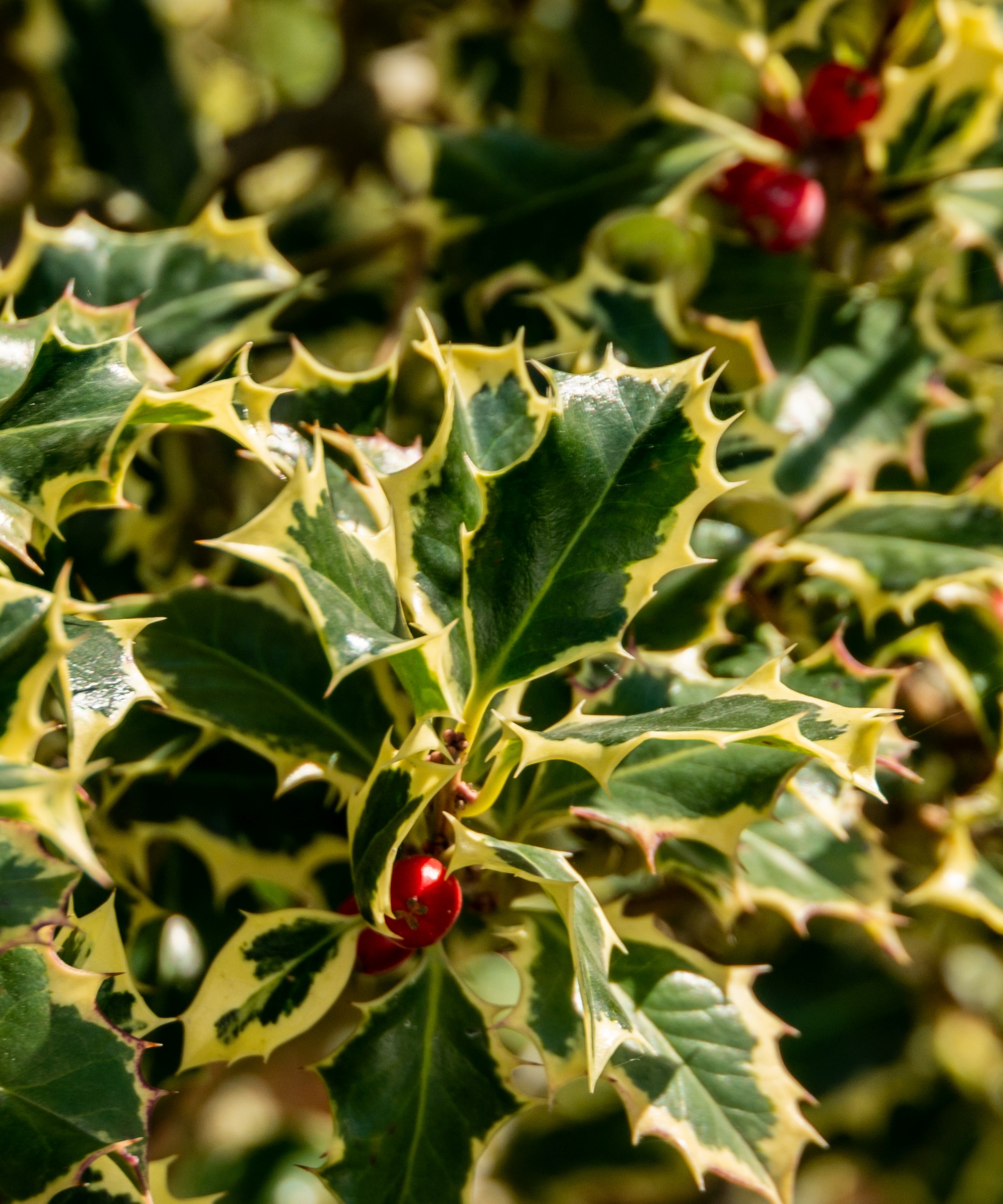
Variegated holly variety 'Argentea Marginata' is attractive and makes a good deterrent for skunks and other intruders
Holly deserves a place in many backyards, and not just because its prickly leaves snag on fine skunk fur and cause the animals discomfort.
It is a slow-growing shrub but well worth your patience, whether you choose a variety with traditional dark green leaves, or one with attractively variegated foliage.
Thanks to its scarlet berries, holly is one of the best shrubs for winter colour, but if you want the fruits for the garden and for festive interior decorations, you will need male and female plants.
Popular varieties include Ilex aquifolium 'Argentea Marginata', which is variegated and female, and Ilex aquifolium 'Silver Queen' which has pale fringing on its leaves and is, confusingly, a male plant.
Bear in mind that although skunks don't appreciate holly, it is a good addition to a hedge for wildlife and garden birds as its foliage provides shelter and the berries are a good source of food.
You can find a range of Holly shrubs at Fast Growing Trees.
7. Daffodils

Daffodils bring spring cheer and also help to keep skunks away
Who doesn’t love daffodils and their cheerful yellow and orange trumpets heralding the long-awaited arrival of spring?
The answer to that is skunks! The bulbs are extremely toxic to our black-and-white furry friends so if you grow them around your backyard you are less likely to be bothered by them.
Plant daffodil bulbs in the fall, in a sunny spot with free-draining soil or in a spring planter alongside other seasonal blooms (though they will be less of a skunk deterrent in a container).
Deadhead your daffodils and narcissus when the flowers fade, but don't cut back the rest of the plant until the leaves have died back and withered and returned goodness to the bulbs before they go dormant.
More kit to help repel skunks from your yard
FAQs
Skunks have a keen sense of smell and hate the scent of citrus, peppermint and lavender. You can soak small pieces of fabric in essential oils and place them around your backyard to keep skunks away. Doing the same with citrus peel also works.
There are several commercial skunk deterrents available, such as Skunk Scram, from Amazon - a natural granular repellent, which is a popular buy.
Bright lights attached to a motion sensor will also scare skunks away but may be bothersome at night, so consider installing something less bright but equally disturbing for animals such as this six-pack of motion-sensitive Lulu animal repelling lights from Amazon, that resembles the eyes of a predator and will also scare off deer, coyotes, foxes and racoons.
What practical methods keep skunks away?
There are several common sense steps you can take. Skunks often make their home under decking, or beneath sheds and wooden steps leading up to a porch - basically any area of your property that doesn't have solid foundations.
Make sure all potential den sites are firmly boarded up. This is especially important as skunks are territorial and will try and return to a den once they have been able to access it. Other simple steps to take is making sure you remove all food after a barbecue or garden party, and ensure that pet food and wild bird food is kept sealed in airtight containers and not left lying open.
Should I try and catch skunks myself?
Never approach a skunk yourself as you will cause the skunk unnecessary stress. Instead call in trainer experts who will be able to trap and safely remove the animal.
If you try to deal with the problem yourself you may also be injured and if the skunk is already in your home, it may spray which will be very expensive to clean up and put right.
Although skunks seem like a menace, they are shy, mild-mannered creatures and an essential part of backyard biodiversity, often just passing through and helping to keep insect pests under control.

Ruth is a Contributing Editor for Homes & Gardens, and formerly Gardening Editor of Amateur Gardening magazine. She is horticulturally trained, with a qualification from the Royal Horticultural Society. Her work for Amateur Gardening, the world's oldest weekly gardening publication, involved matching gardening tasks with each season, covering everything from sowing and planting, to pruning, taking cuttings, dealing with pests and diseases and keeping houseplants healthy. She is an expert in ornamental plants and edible crops, and everything she writes about and photographs is in her own garden, that has been a work in progress since her family moved there in 2012.